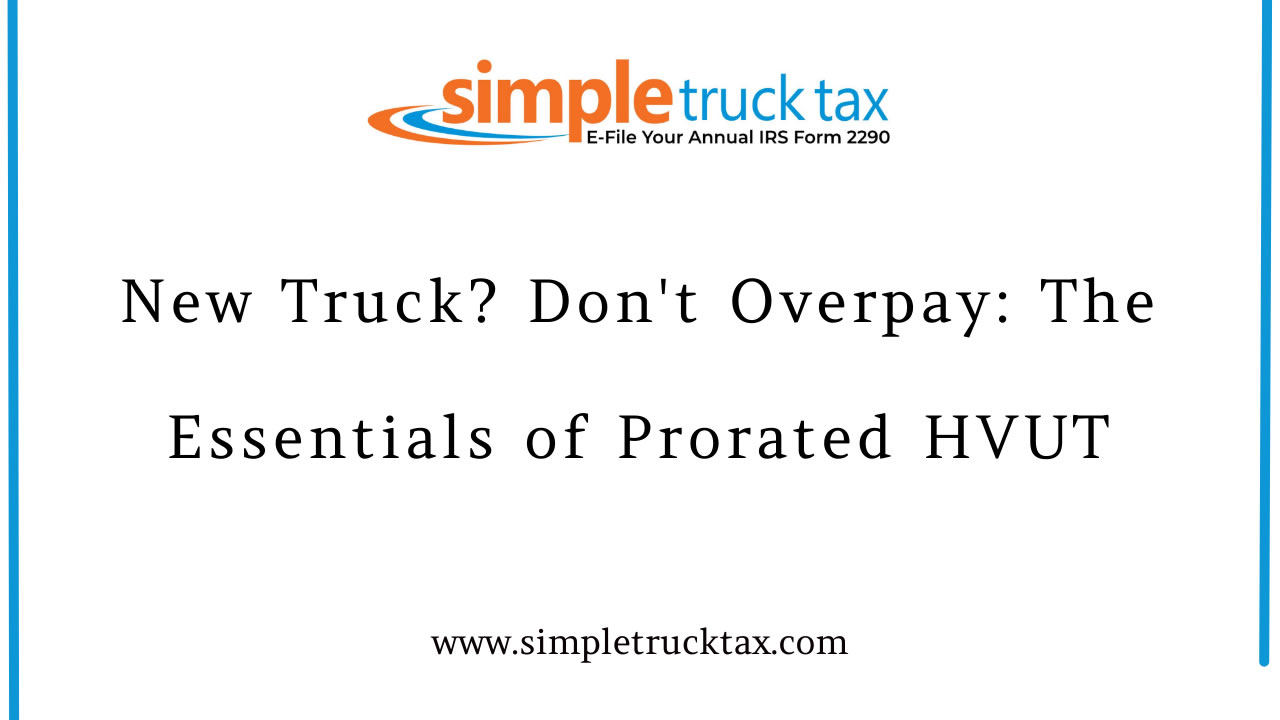
New Truck? Don't Overpay: The Essentials of Prorated HVUT
Just brought home a new gleaming heavy highway truck? Congratulations! If you're an owner-operator or running an increasing trucking fleet, purchasing a new rig is exhilarating.
But with new wheels comes a new duty: the Heavy Vehicle Use Tax (HVUT), reported every year using Form 2290. But here's a frequent question that can cause overpaying: "Do I pay the whole tax if I purchased my truck in mid-year?"
The answer is likely no, thanks to something called prorated tax in HVUT.
Understanding Prorated HVUT
The IRS knows that not all business trucks take to the road precisely on July 1st, which marks the beginning of the HVUT tax year. If your newly purchased (or used) truck's "first used month" is later than July, you do not owe the entire year's federal excise tax.
Rather, your Form 2290 tax return will show a prorated sum, calculated according to the number of months left in the tax year.
How Prorated Tax Works
The math is simple: the HVUT figure for your vehicle's gross taxable weight classification, per year, divided by 12, times the number of months until next June 30th (tax year's end). For instance, if you put your truck into service for the first time in October, you'll be paying for nine months of the tax year.
This way, you're only paying for the time that your heavy highway vehicle is truly in service and under the tax.
Why Knowing This Saves You Money
Many truck owners simply assume they owe the full amount, potentially overpaying by hundreds of dollars. Knowing about prorated tax ensures you only pay your fair share.
When you're ready to e-file Form 2290 for your new vehicle, your IRS authorized e-file provider should automatically help you calculate this prorated amount, simplifying your tax preparation.
It's important to properly identify your first used month (FUM) since this will affect your prorated tax computation and your payment due date for HVUT. Properly filing your Form 2290 online using correct information guarantees you an IRS-stamped Schedule 1 in no time, which is vital to use when registering your vehicle with the DMV.
Don't let a new truck result in unnecessary costs. Learning prorated HVUT is an important step towards smart tax compliance for every trucking firm and solo owner-operator. File smart, pay less, and keep your wheels turning without paying too much of your heavy vehicle use tax.